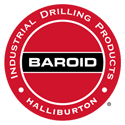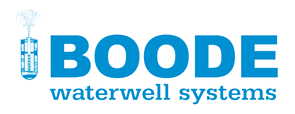Well Remediation and Rehabilitation
It is essential that water wells and boreholes operate reliably and efficiently throughout their operational life. However, it is well known that over months and years of continued operation, pumped wells may show a gradual reduction in performance, evidenced by loss of yield or increase in drawdown in the wells. These operational problems are often associated with clogging or encrustation of wells or pumps as a result of chemical and bacterial processes occurring in the well.
Most commonly, well clogging and plugging are caused by either iron-related or carbonate-related encrustation.
Iron-related clogging
Iron is one of the most common elements found in nature. It accounts for at least 5% of the earth’s crust and most groundwater contains a finite concentration of dissolved iron. Iron oxide and iron oxyhydroxide compounds can be deposited by chemical processes associated with aeration inside the well bore and filter. Additionally, iron-related bacteria can become established inside wells, pipework and pumping equipment and thrive there. Iron bacteria derive the energy they need by oxidising the soluble ferrous iron (Fe2+) present in the groundwater to an insoluble ferric form (Fe3+). The resultant biofilm is commonly found as a slimy or gelatinous deposit, typically red-brown in colour and over time these deposits develop into solid encrustations that can be difficult to remove. Whether caused by bacterial activity or through chemical reactions, these types of iron-related contamination will eventually affect nearly everyone who pumps from wells or sources water from aquifers.
Carbonate-related clogging
Whilst not as widespread as iron deposits, calcium carbonate contamination can cause similar yield and operational problems. When groundwater is extracted via wells there is a natural pressure release on the water as it moves from the formation into the well bore and to the pump. As the pressure drops, the natural carbon dioxide dissolved in solution is released resulting in an increase in water pH. As the pH increases in waters with high levels of calcium carbonates, rapid precipitation of calcareous deposits occur in the well and pump, often resulting in the deposition of hard scale deposits.
Symptoms of clogging and encrustation include:
- Reduction in the yield of the well
- Deterioration of the pumped water quality
- Burn out of the electric motor of the submersible pump, and
- Encrustation on the pump, column, bore casing, screens and reticulation systems.
- Over time the encrustation can become so serious that a well has to be decommissioned.
Groundwater Engineering provide a range of mechanical, hydro-mechanical and chemical methods to rehabilitate wells and boreholes suffering from clogging and encrustation problems ranging from iron bacteria to residue combinations of oxides and carbonates.
We also apply preventative maintenance programmes for water wells. Our most effective maintenance programmes are those that incorporate a monitoring and measuring management plan alongside chemical treatment using the Boresaver range of products.
The goal of the BoreSaver borehole management programme is to return borehole production to as close to the original drilled capacity as possible and to help maintain a continual, problem-free water supply.
The BoreSaver management programme combines a downhole camera survey with a bespoke software programme that monitors and then analyses a set of key parameters and which are benchmarked against historical data for each well and wellfield, allowing a proactive and individual maintenance plan to be projected. Key thresholds and set points are prescribed to the wellfield, programmed into the monitoring software and then flagged automatically when they occur.
A purpose built rehabilitation rig and BoreSaver, a range of approved borehole rehabilitation treatments used successfully in more than fourteen countries worldwide, is used for the necessary maintenance of the wells. The Boresaver products have been through a rigorous testing and approval process, in the UK and in America. In the UK, Ultra C, Liquid Enhancer and IKL Pro (for calcium carbonate) have been approved by the Secretary of State under Regulation 31 of the Water Supply (Water Quality) Regulations 1989 for use in potable water applications. In the USA, BoreSaver Ultra C has been tested and certified by NSF International, the Public Health & Safety Organisation in America, under ANSI/NSF Standard 60 for use in potable water.
Blog
Dewatering for Basement Construction
12 March 2016Groundwater can be a significant problem when excavating for basement construction. This blog discusses the available techniques that can be used to dewater during basement construction.
Read More




